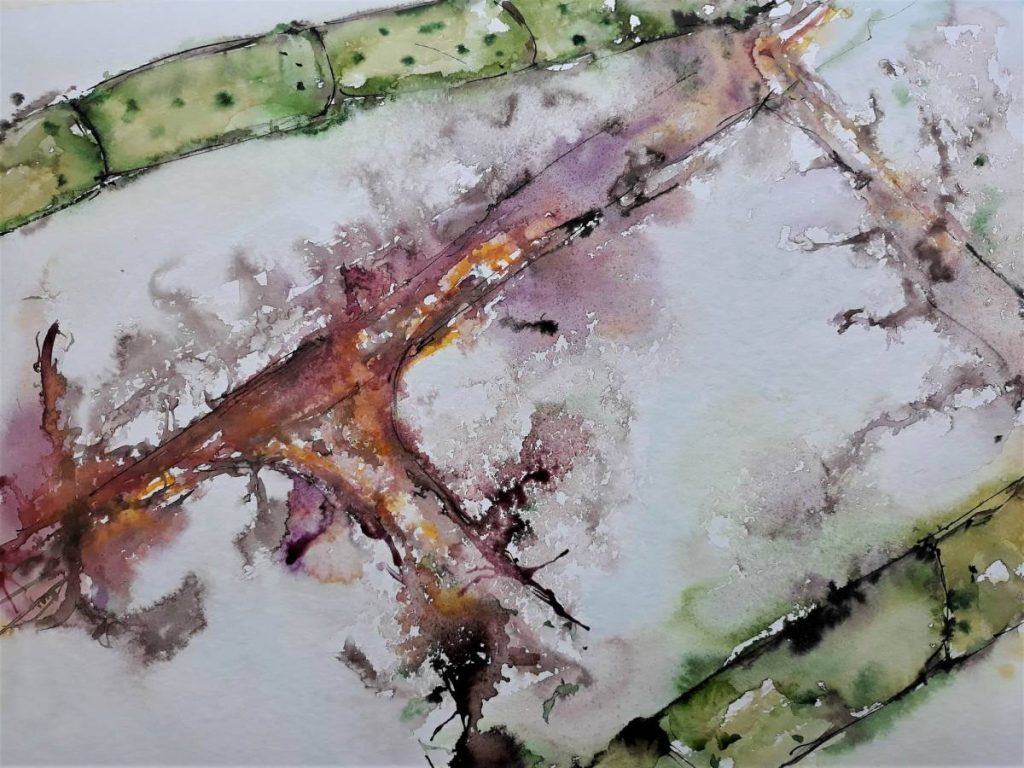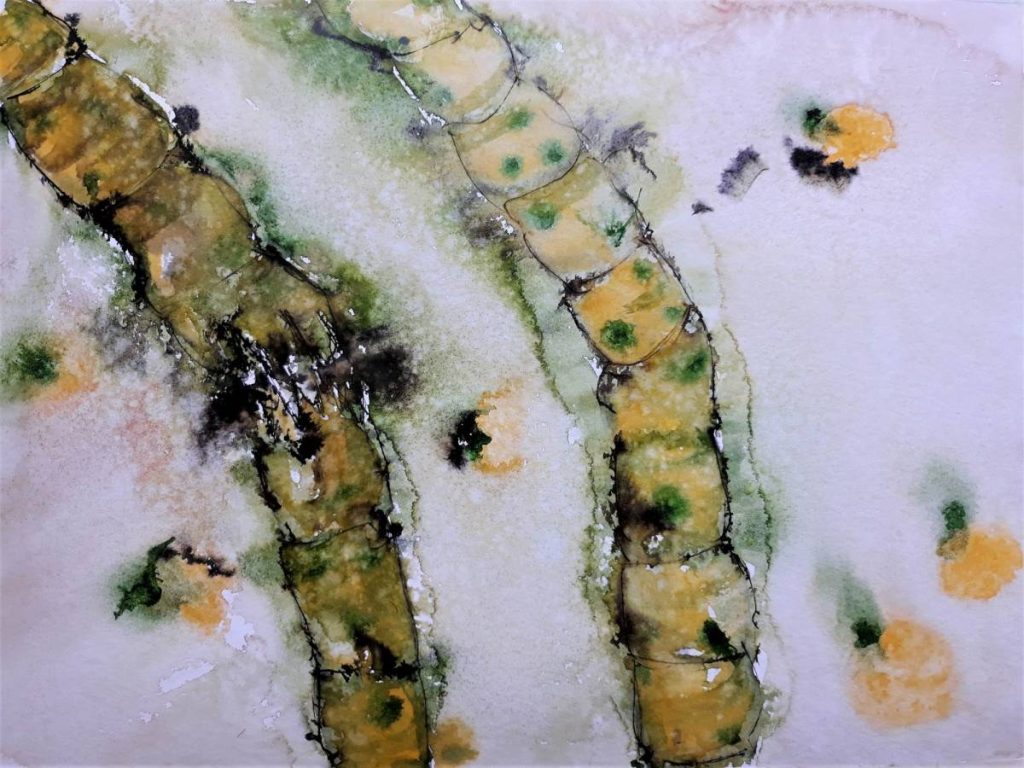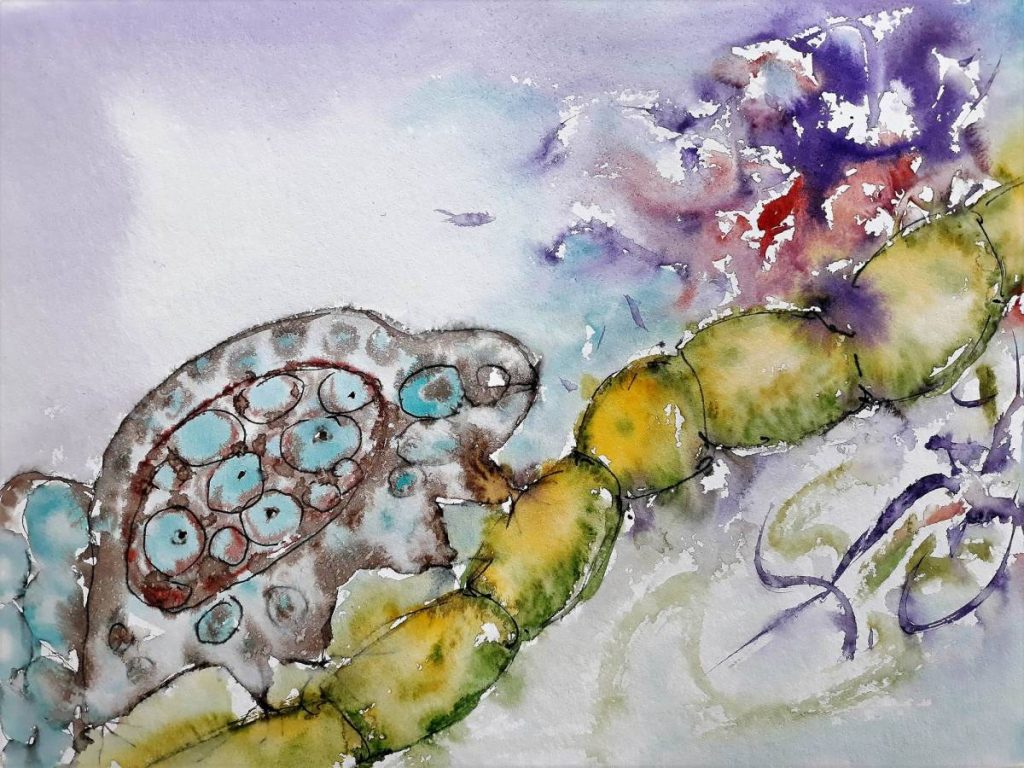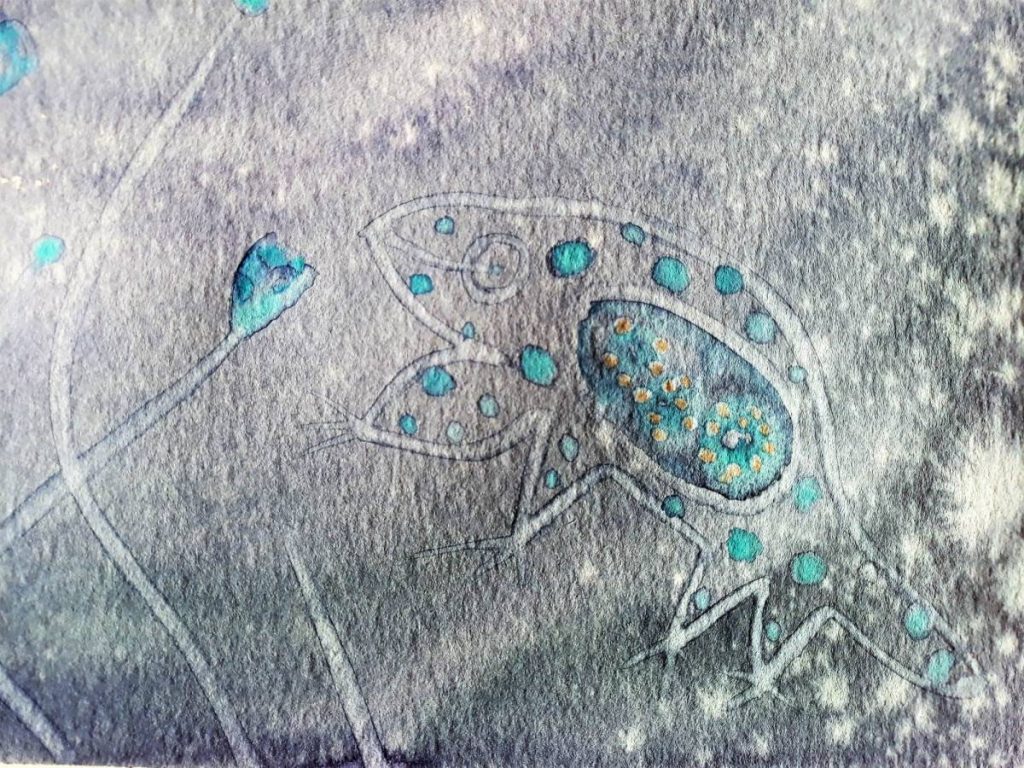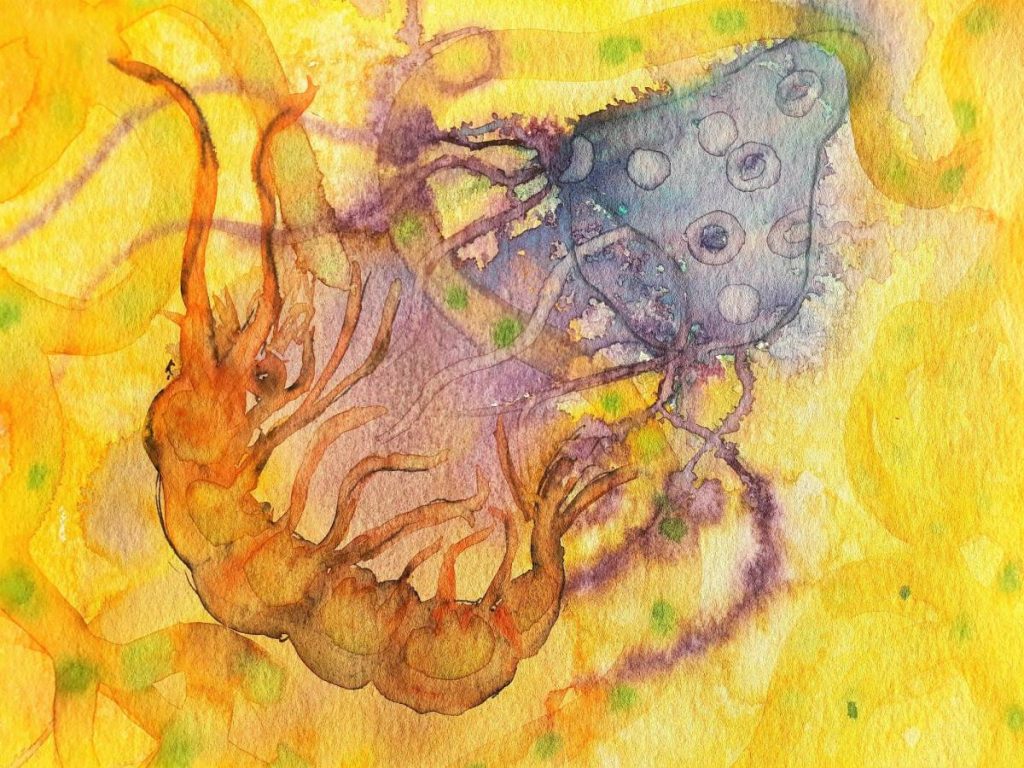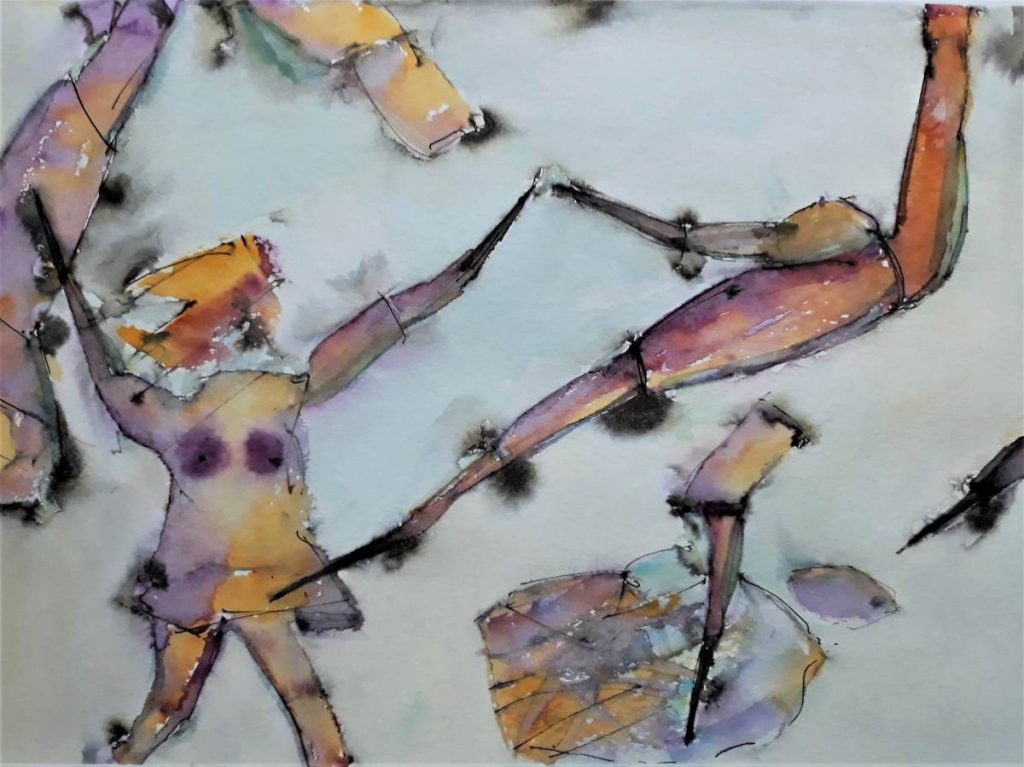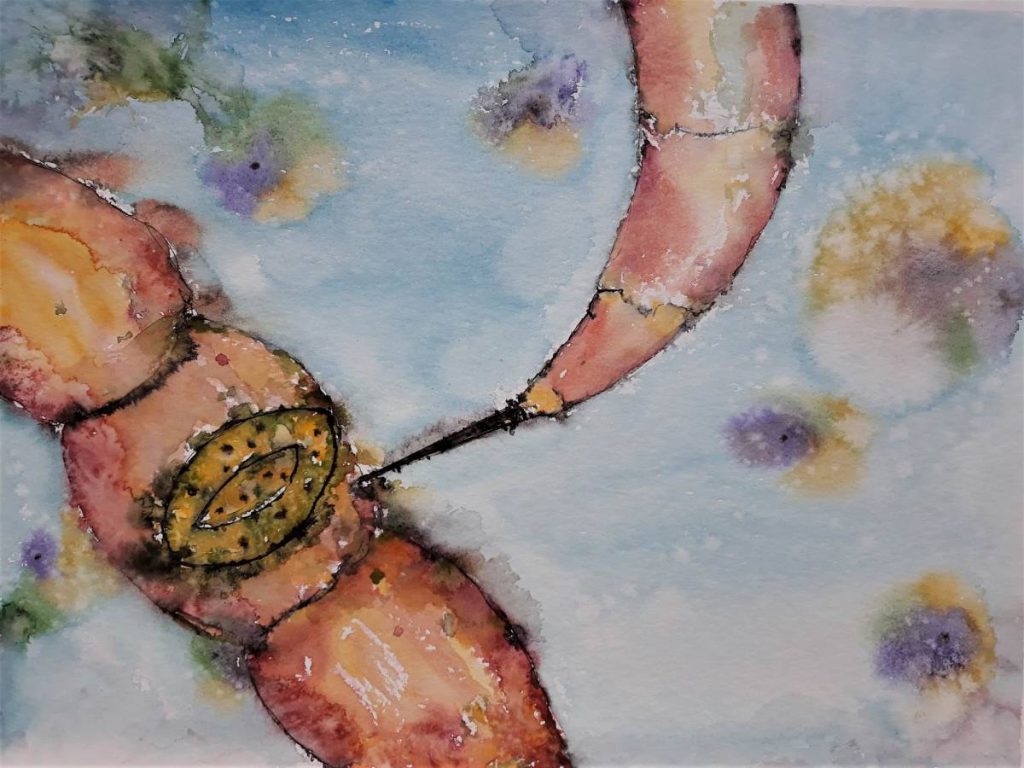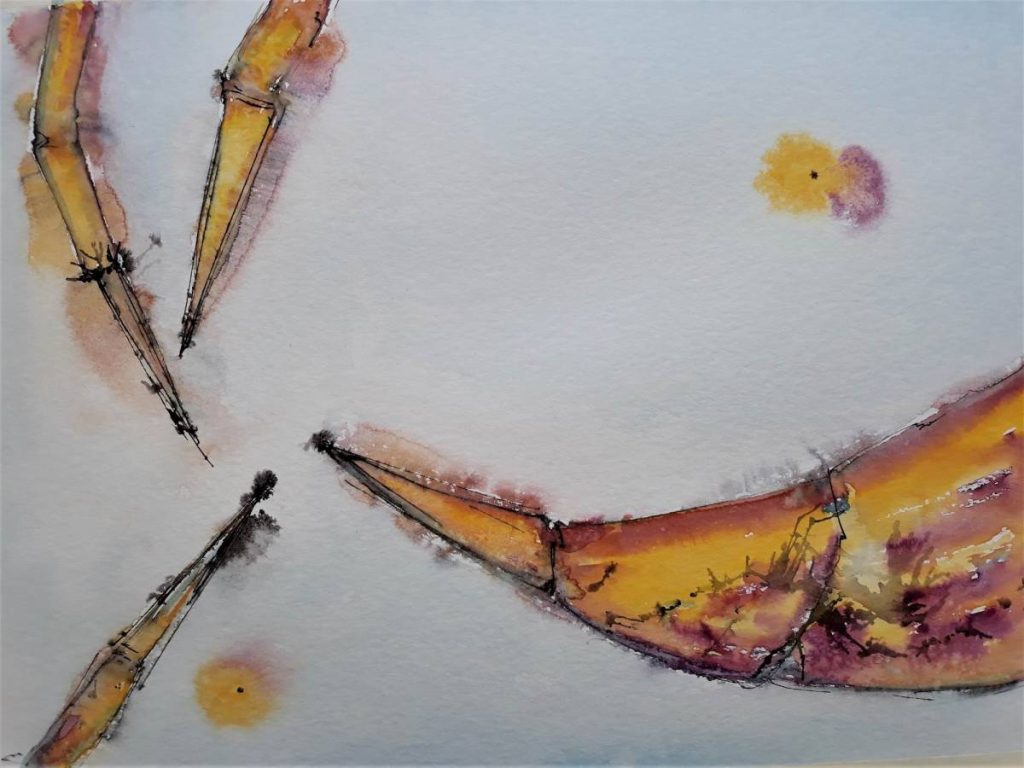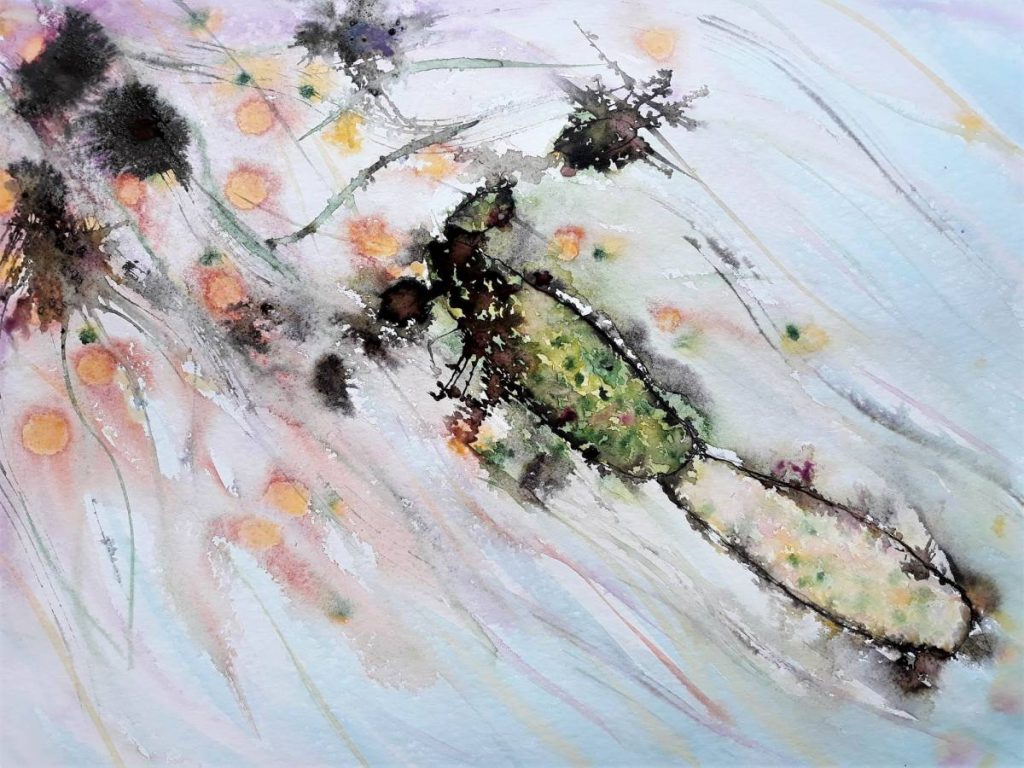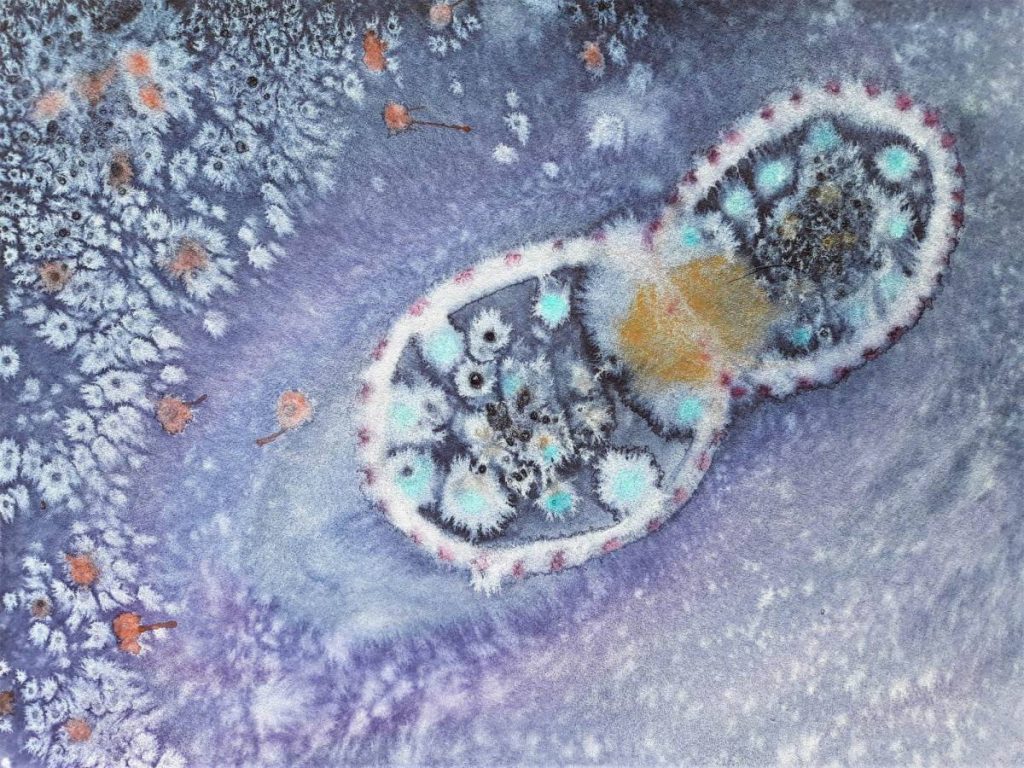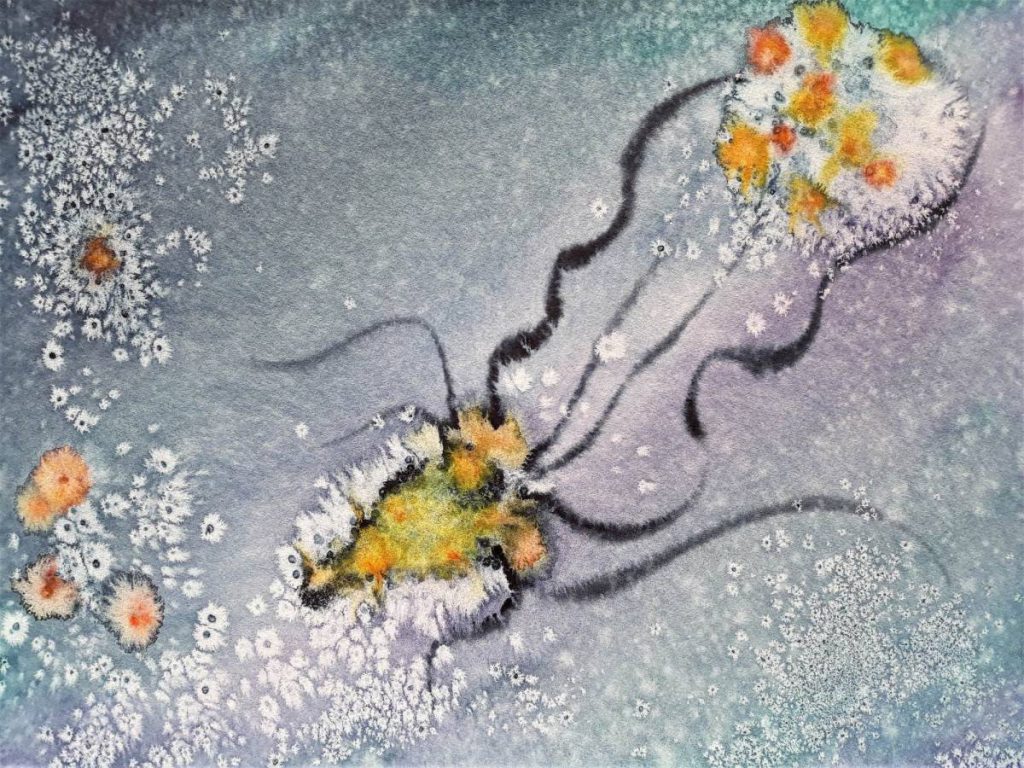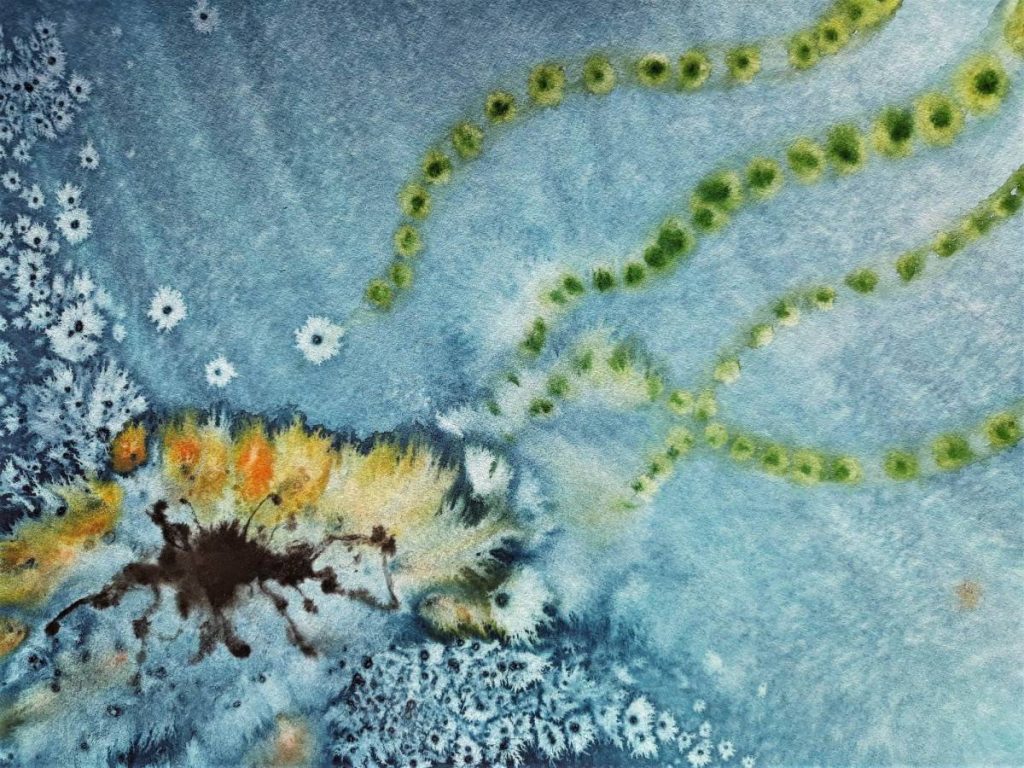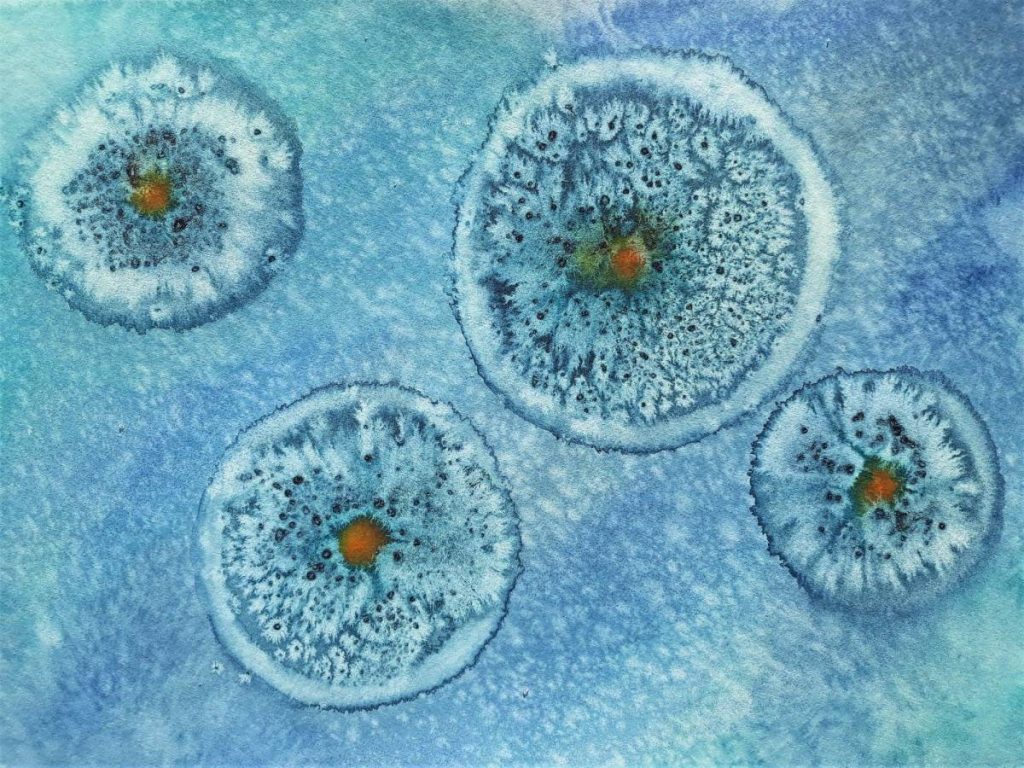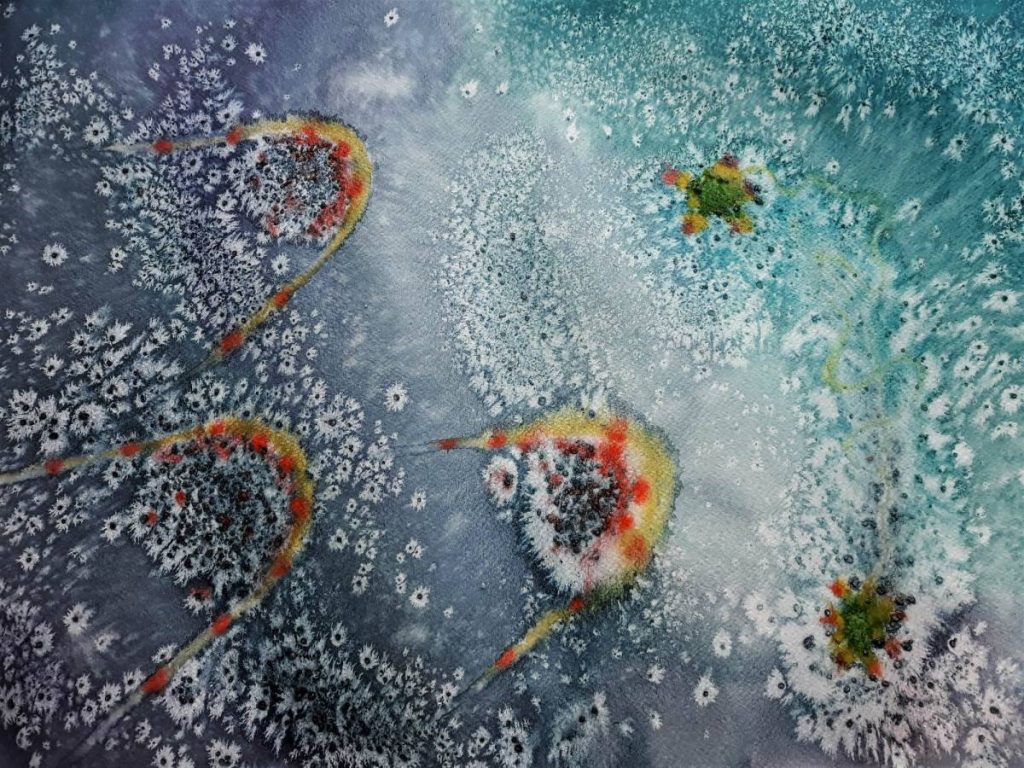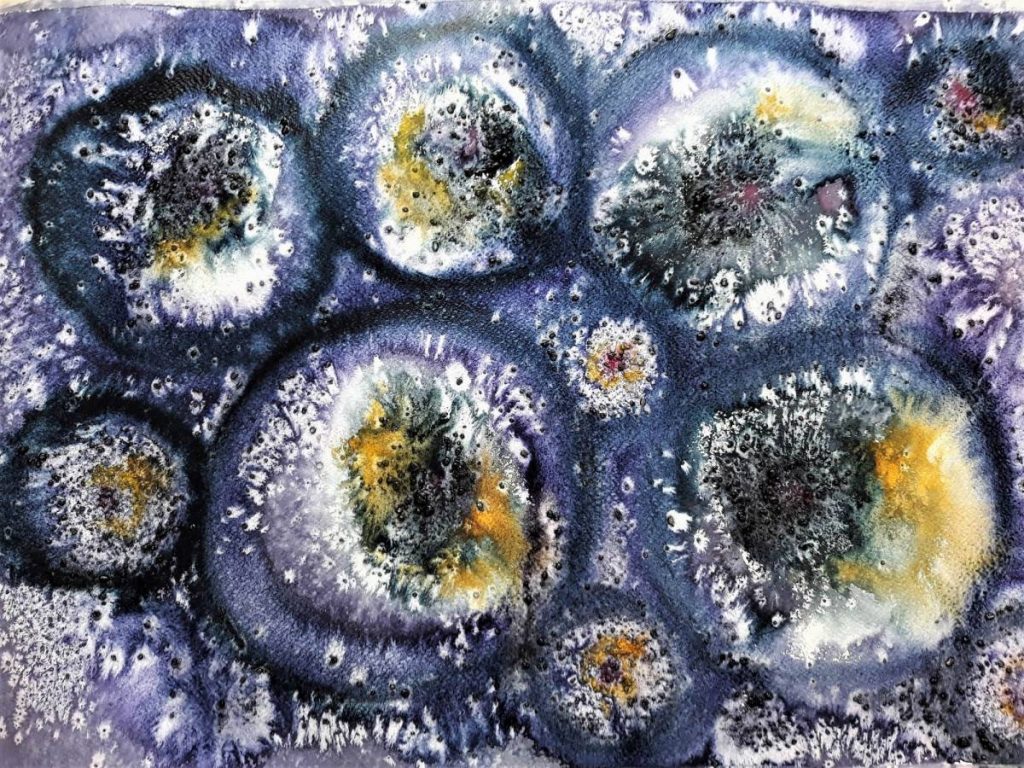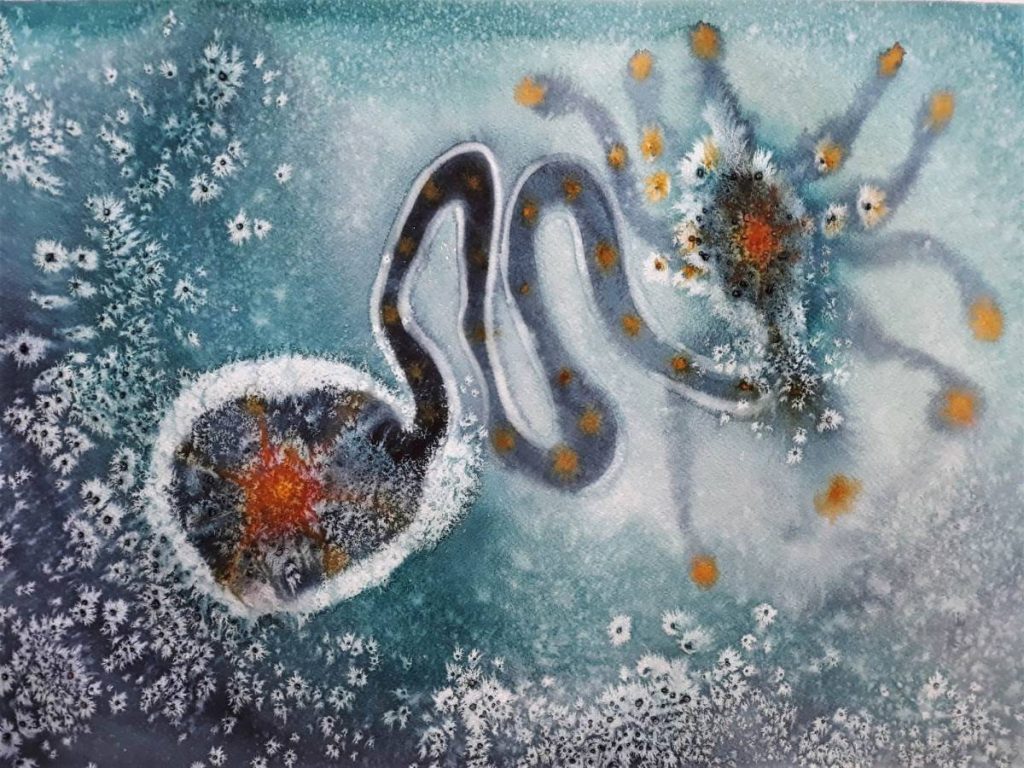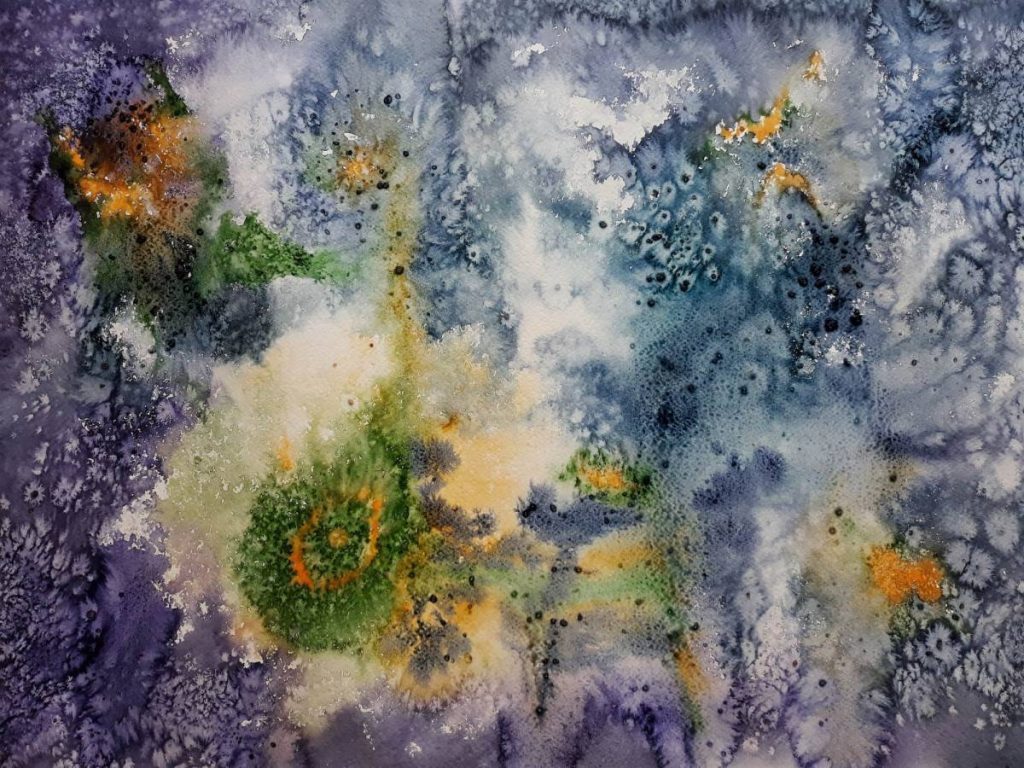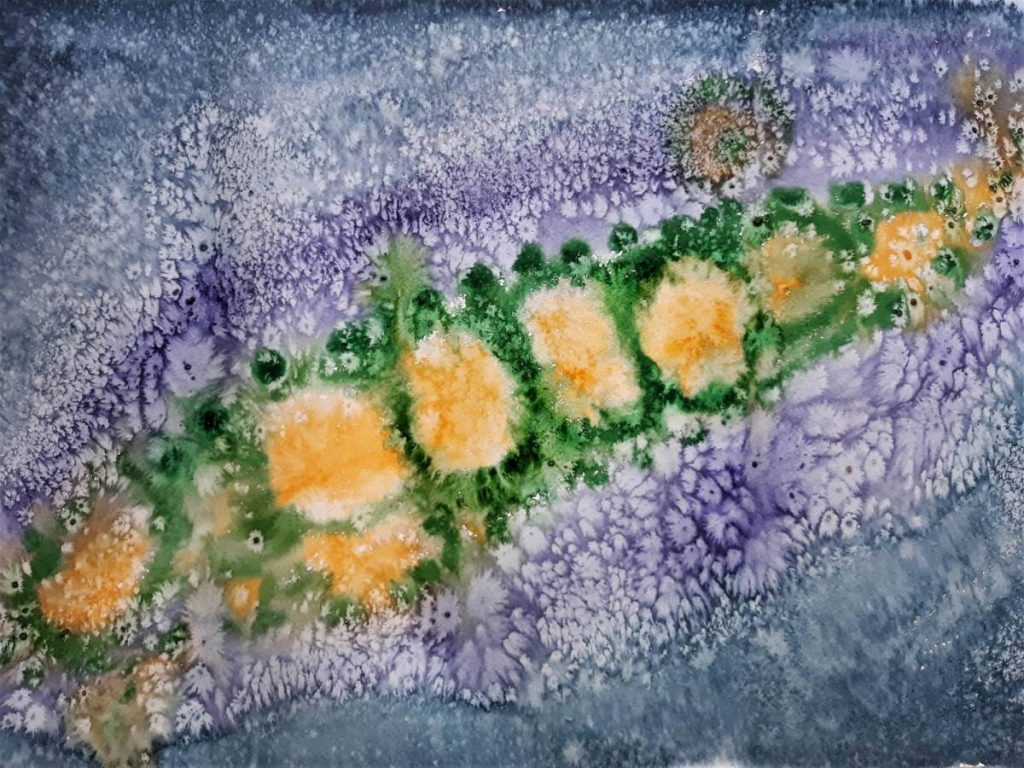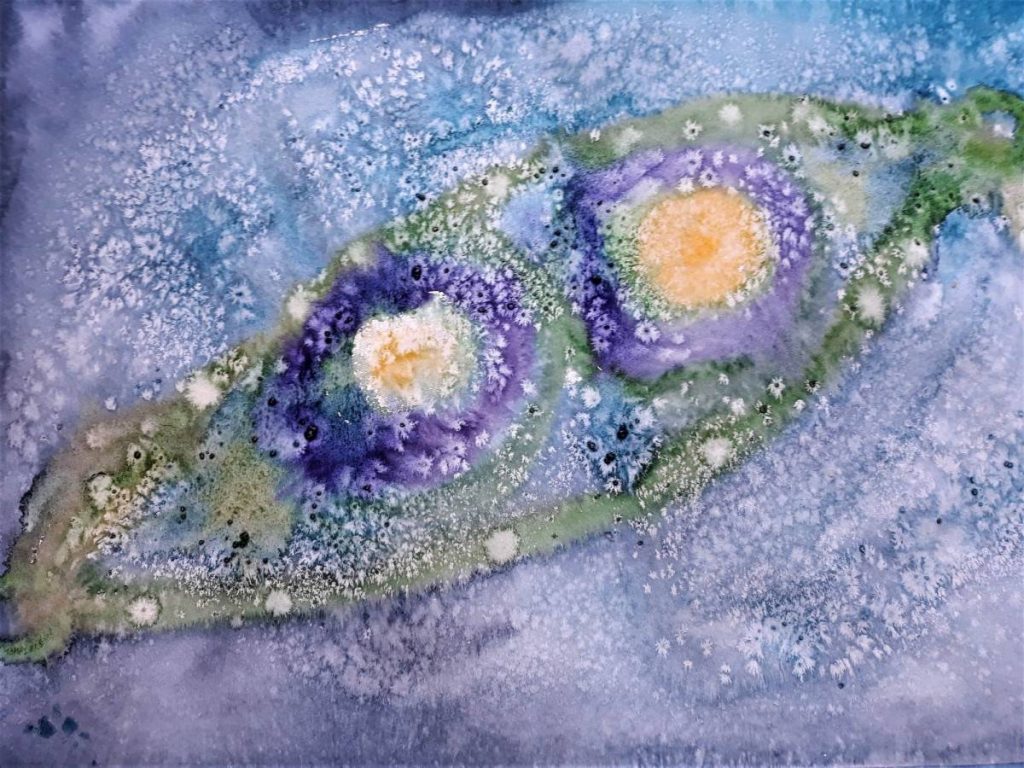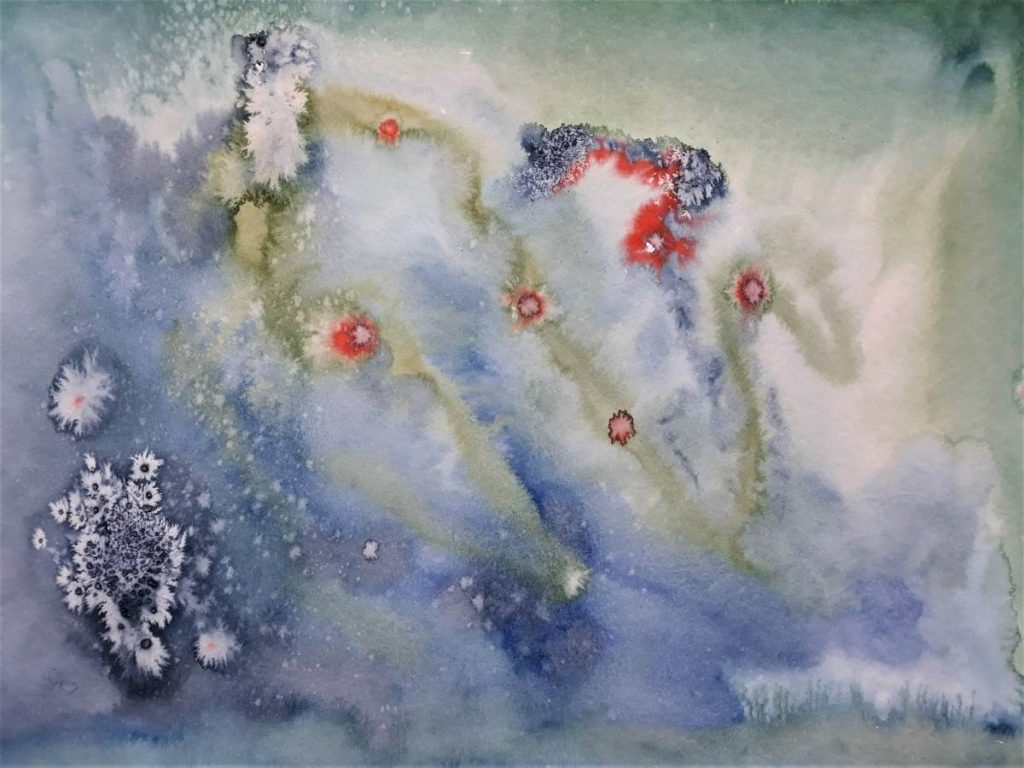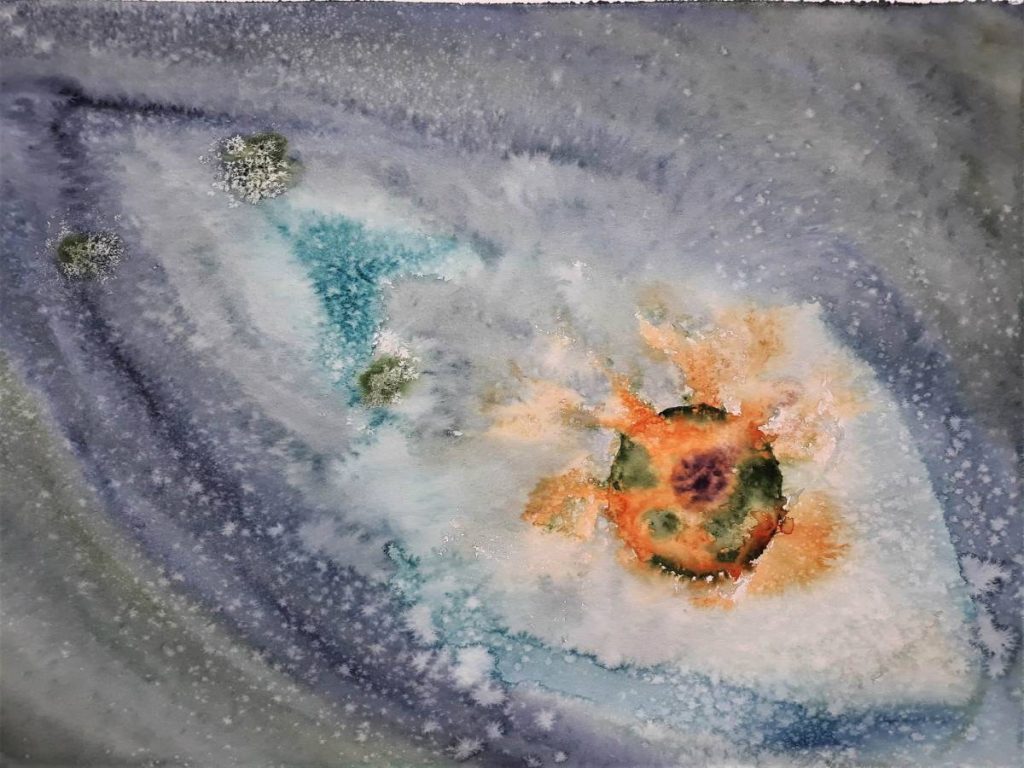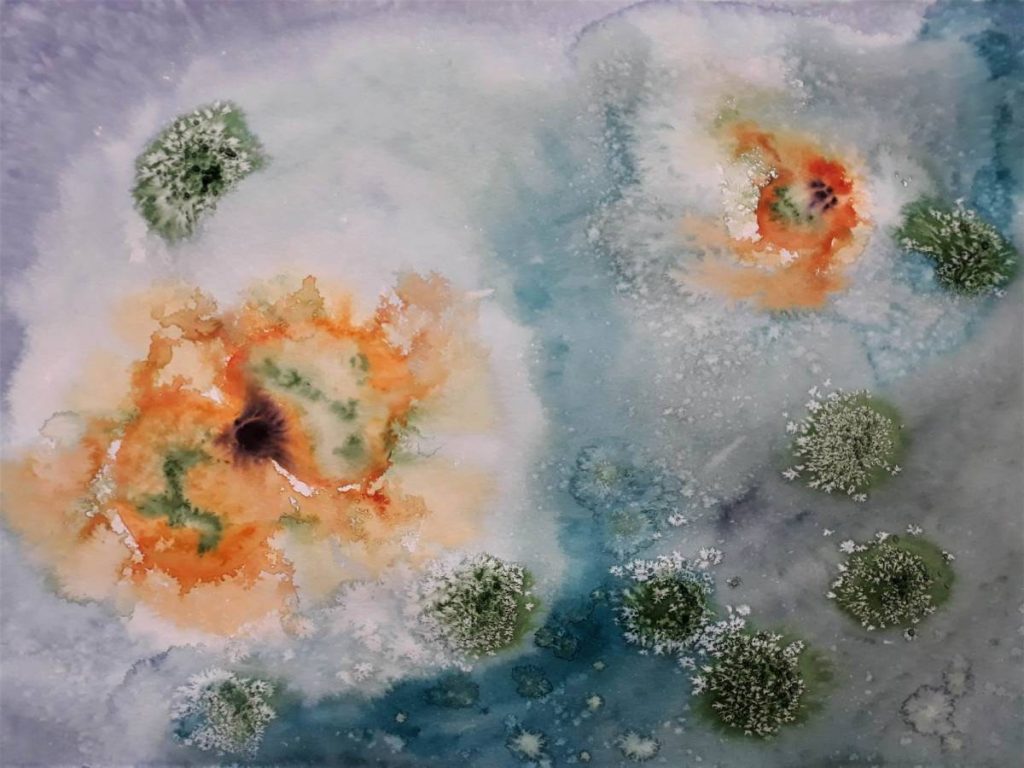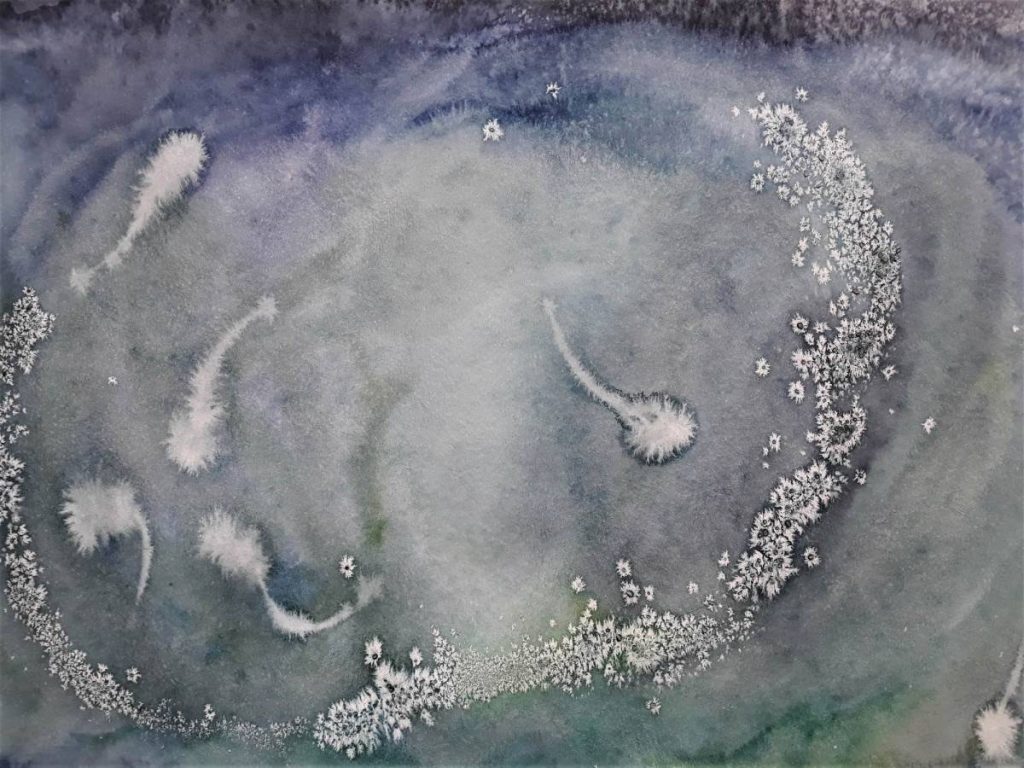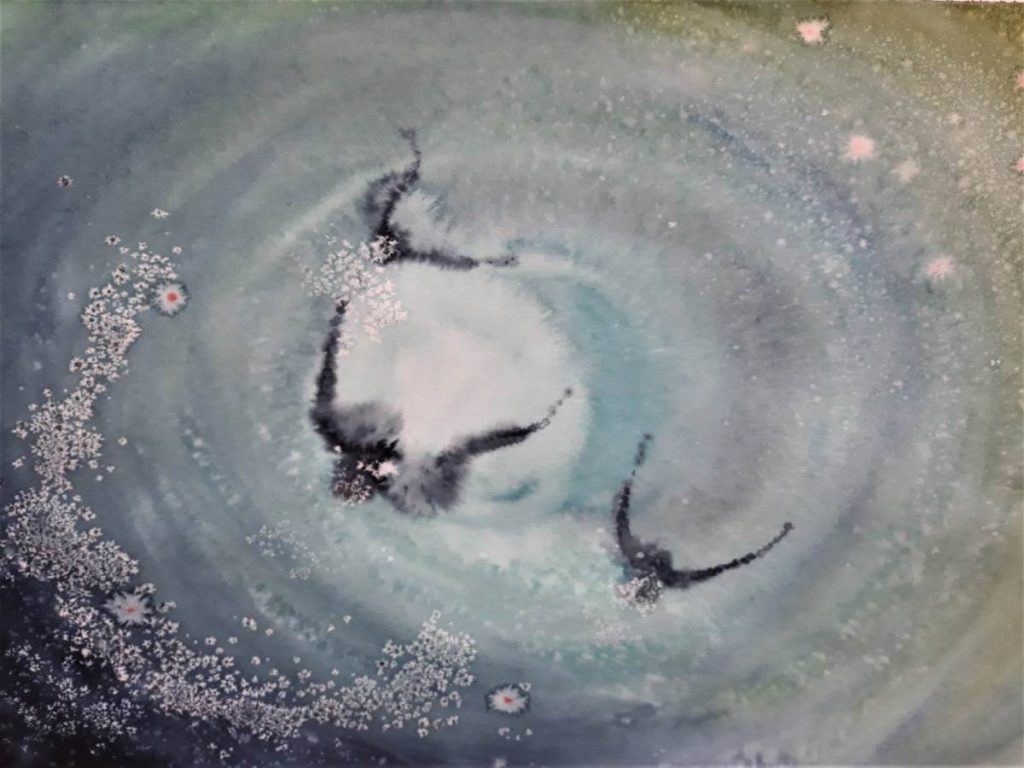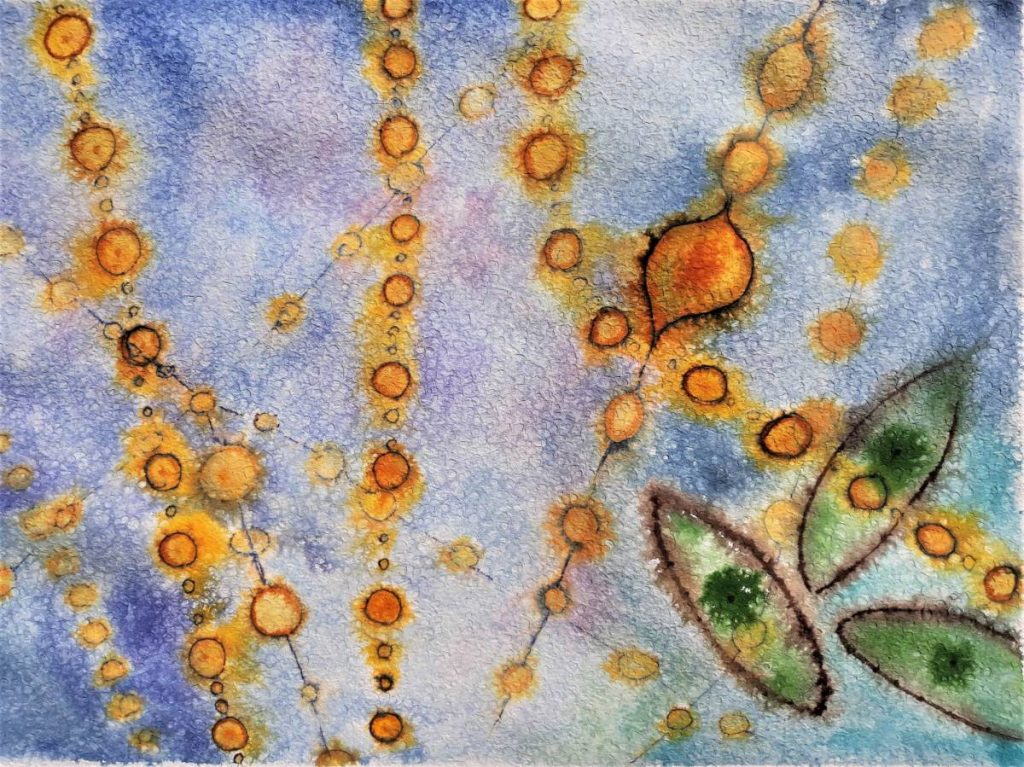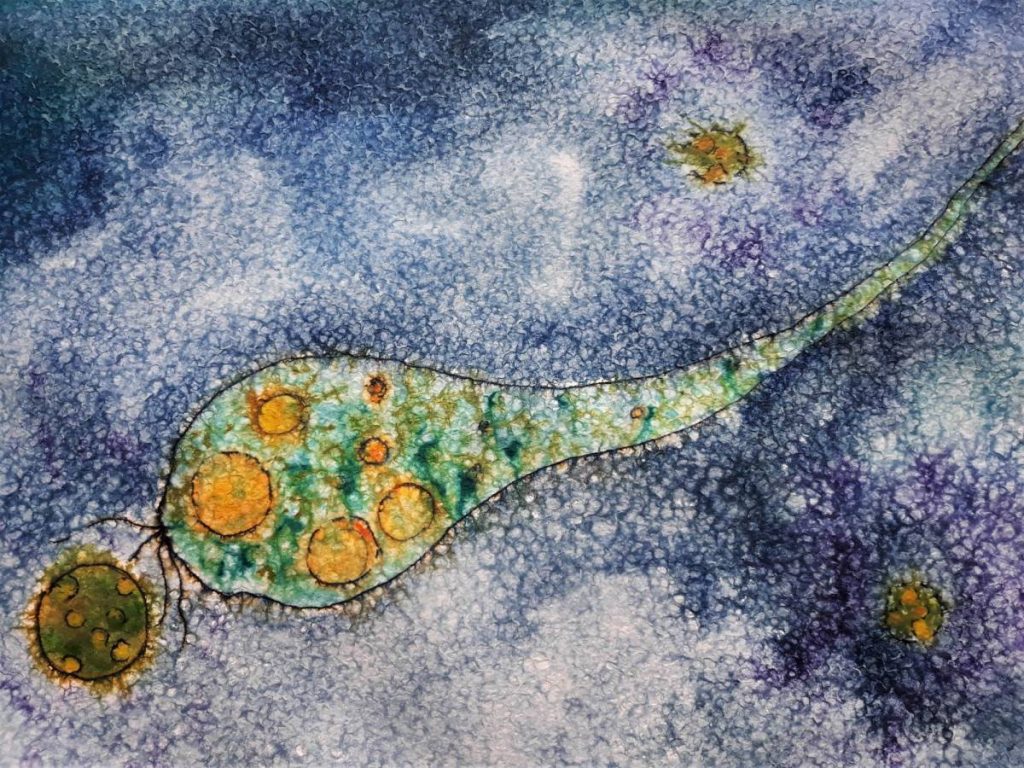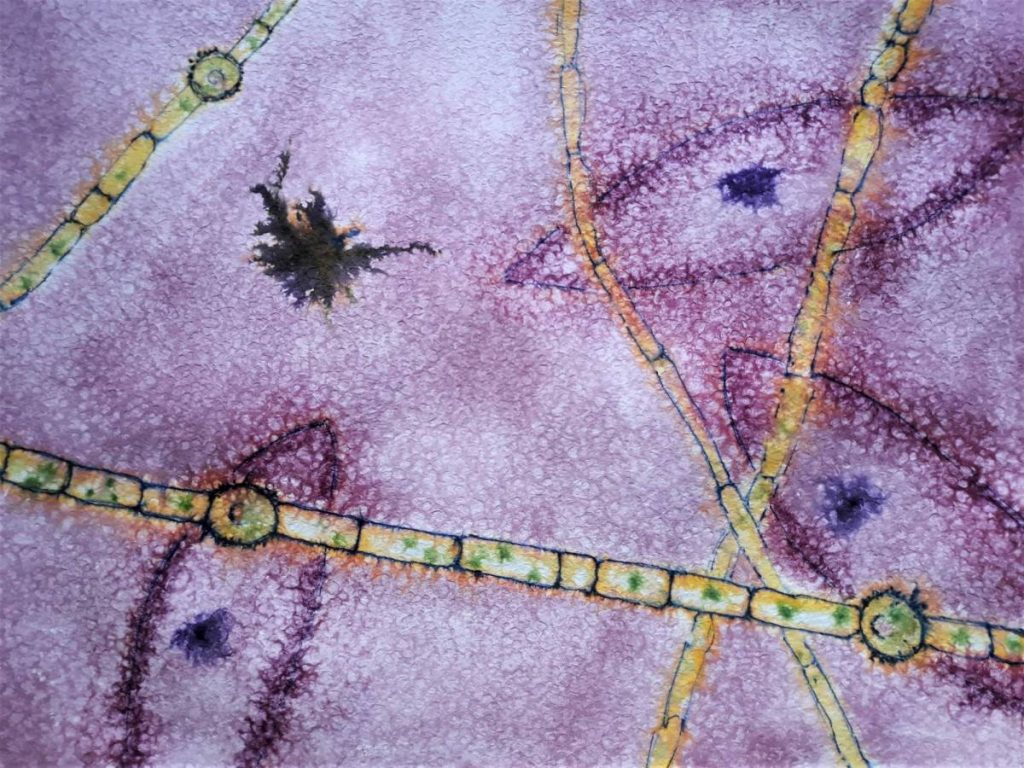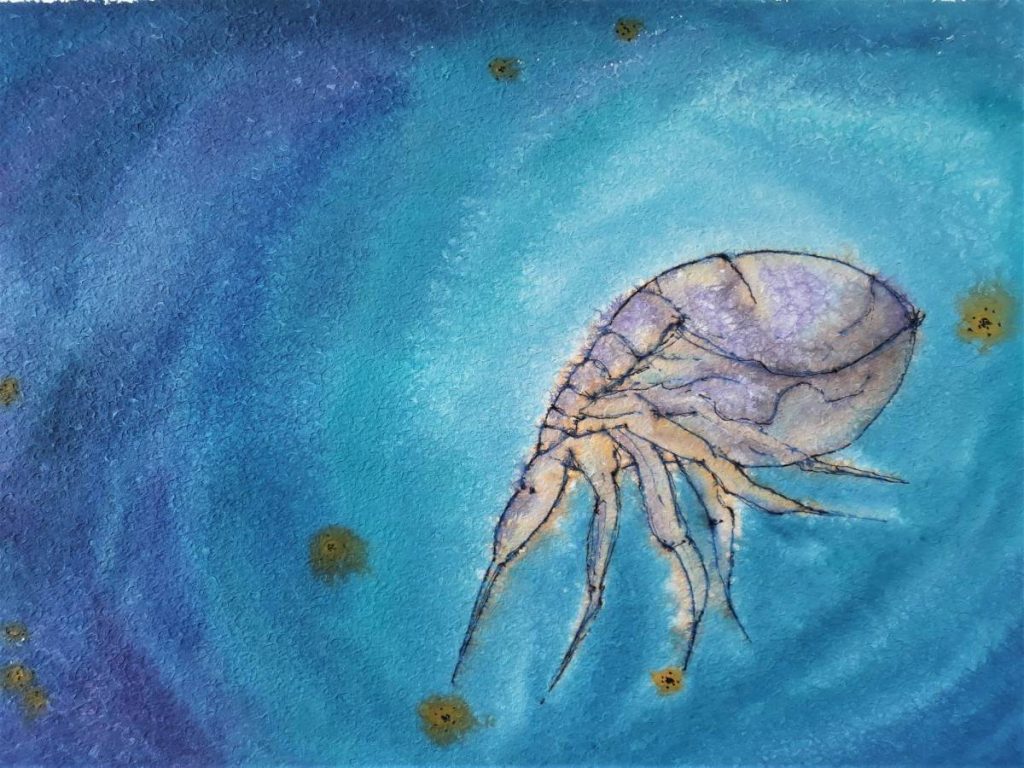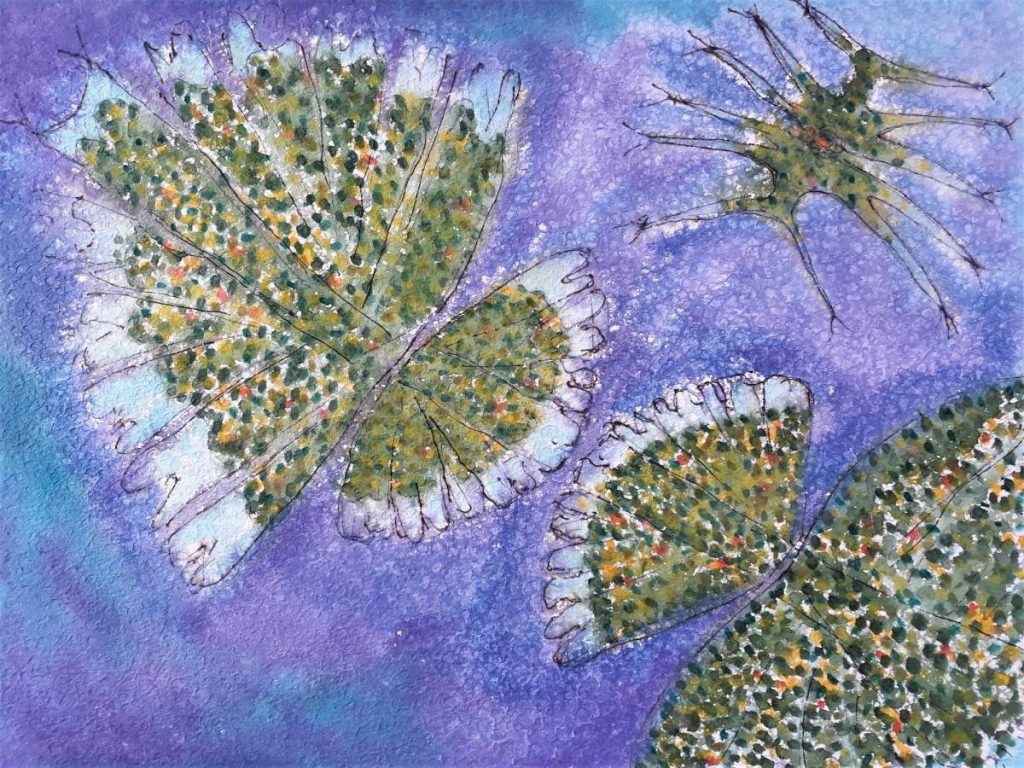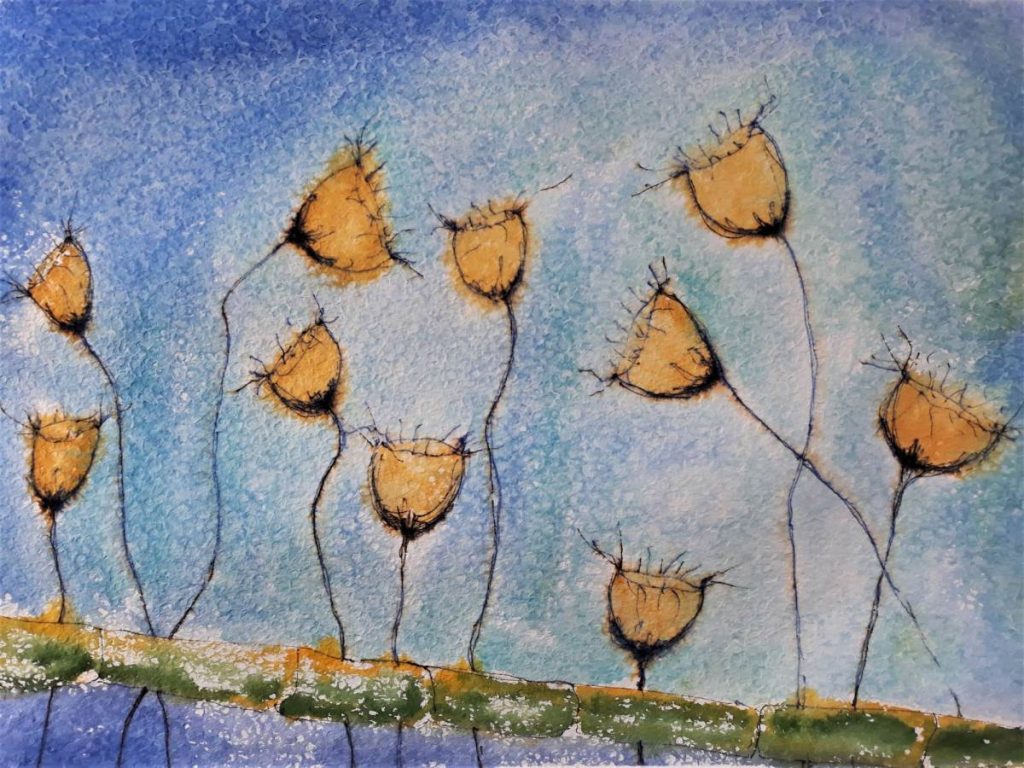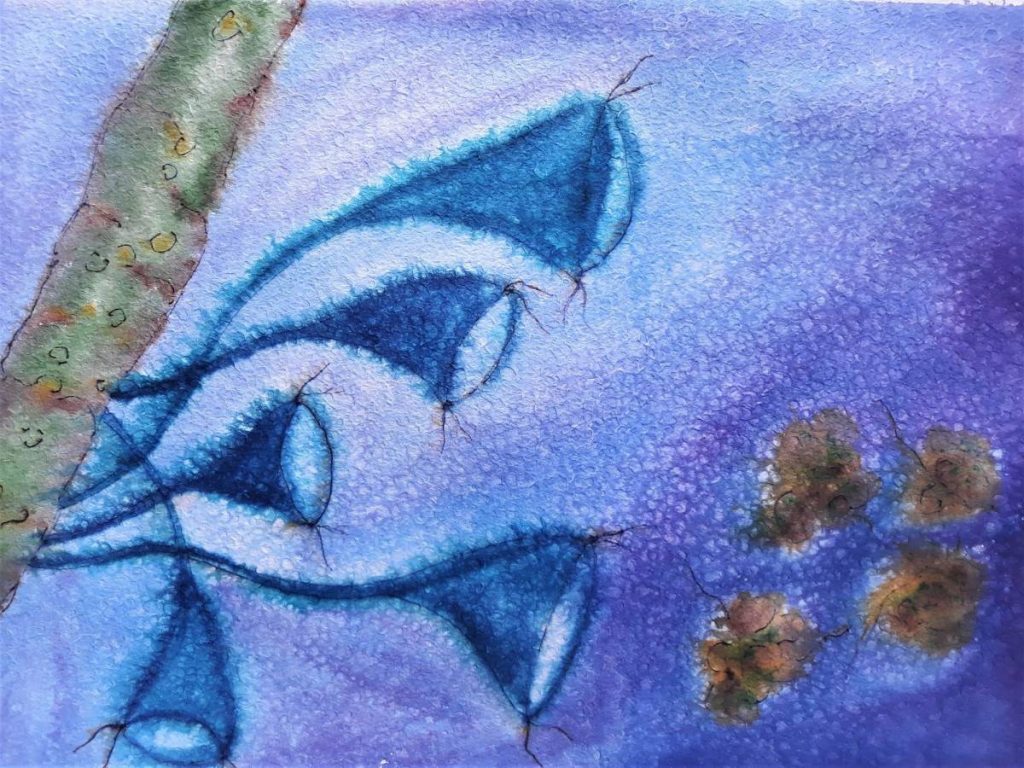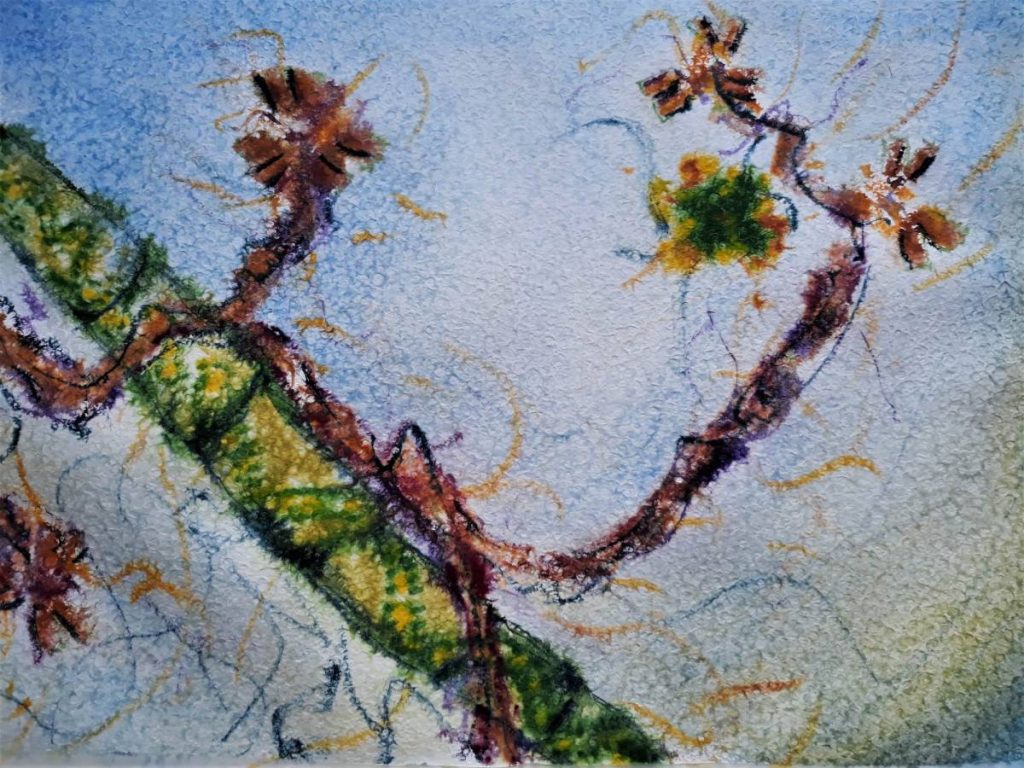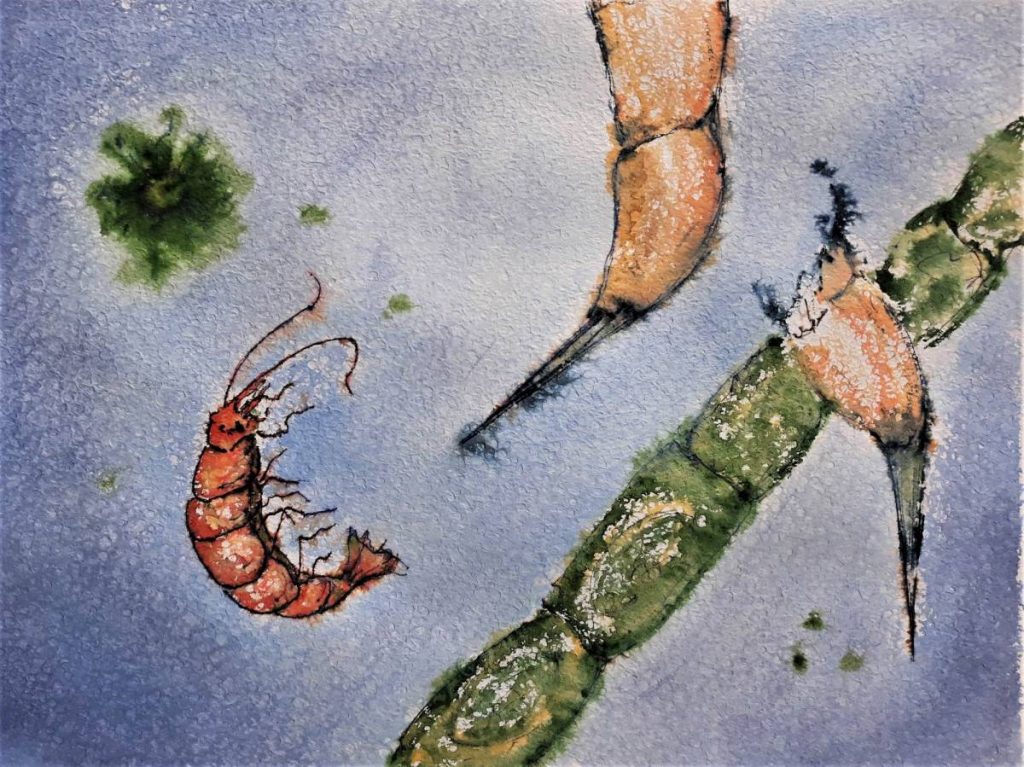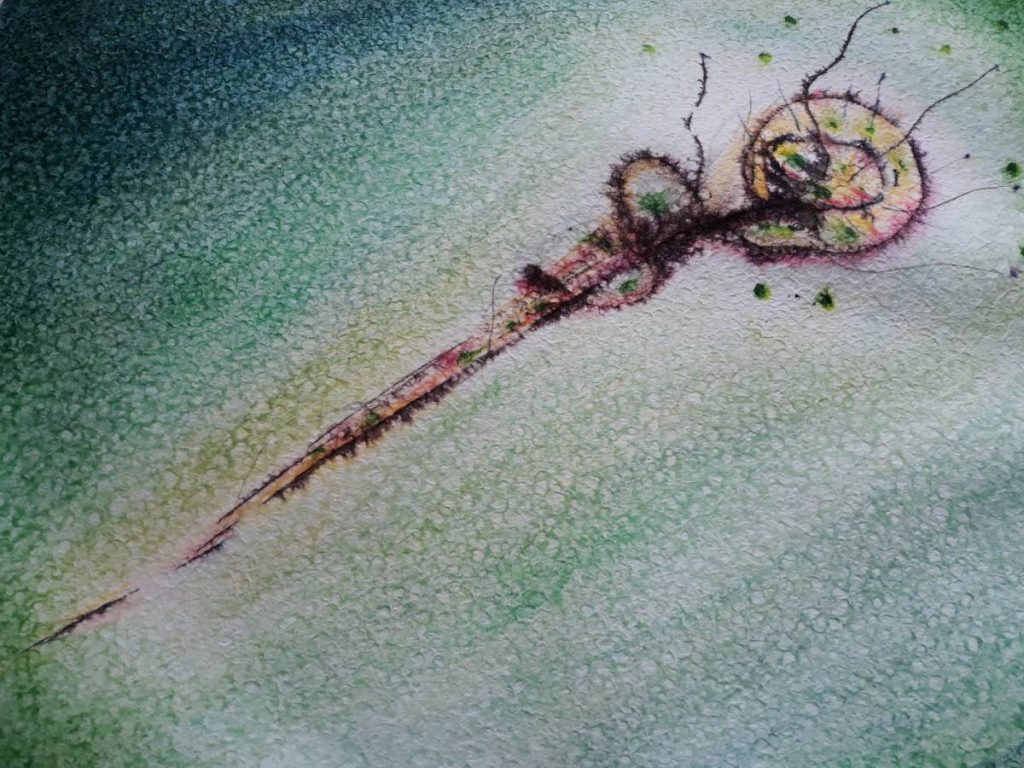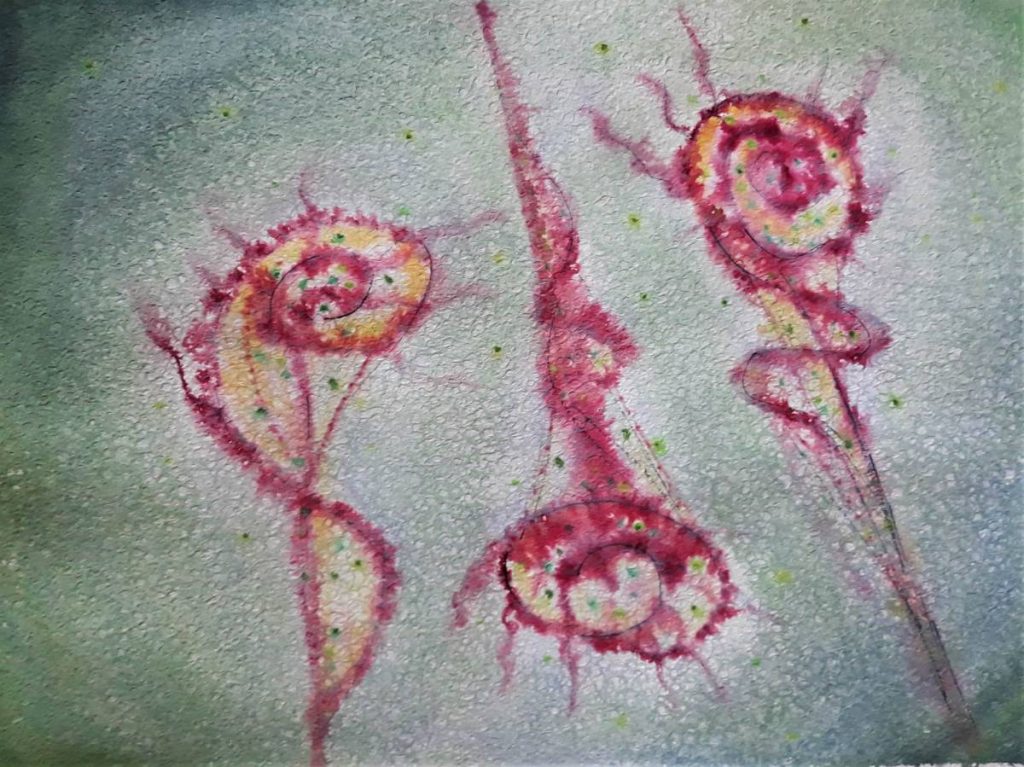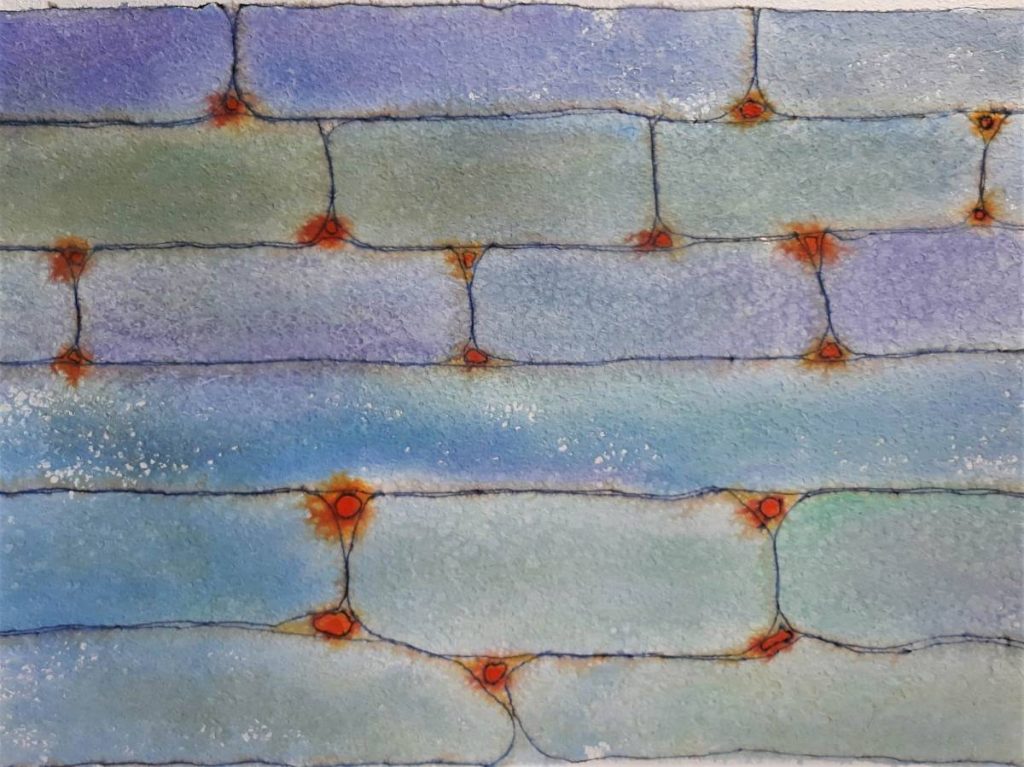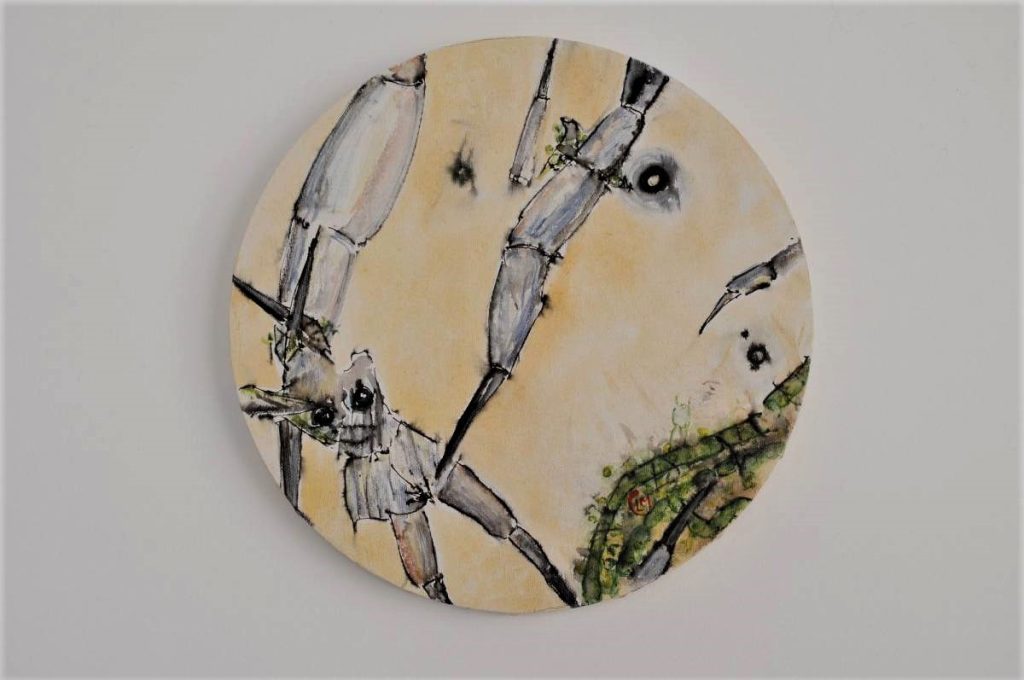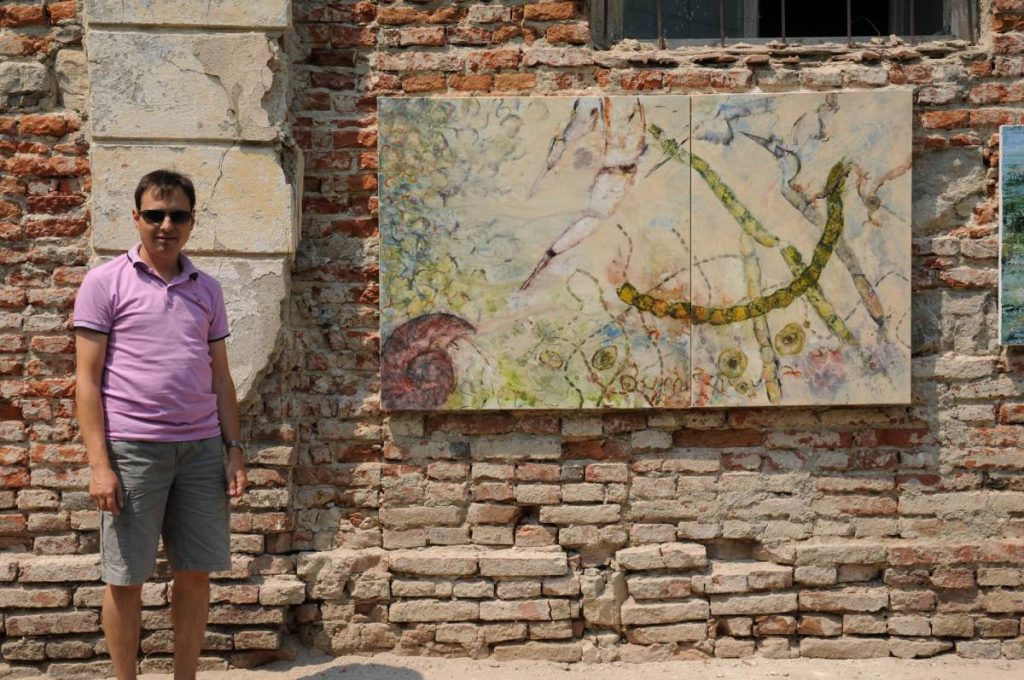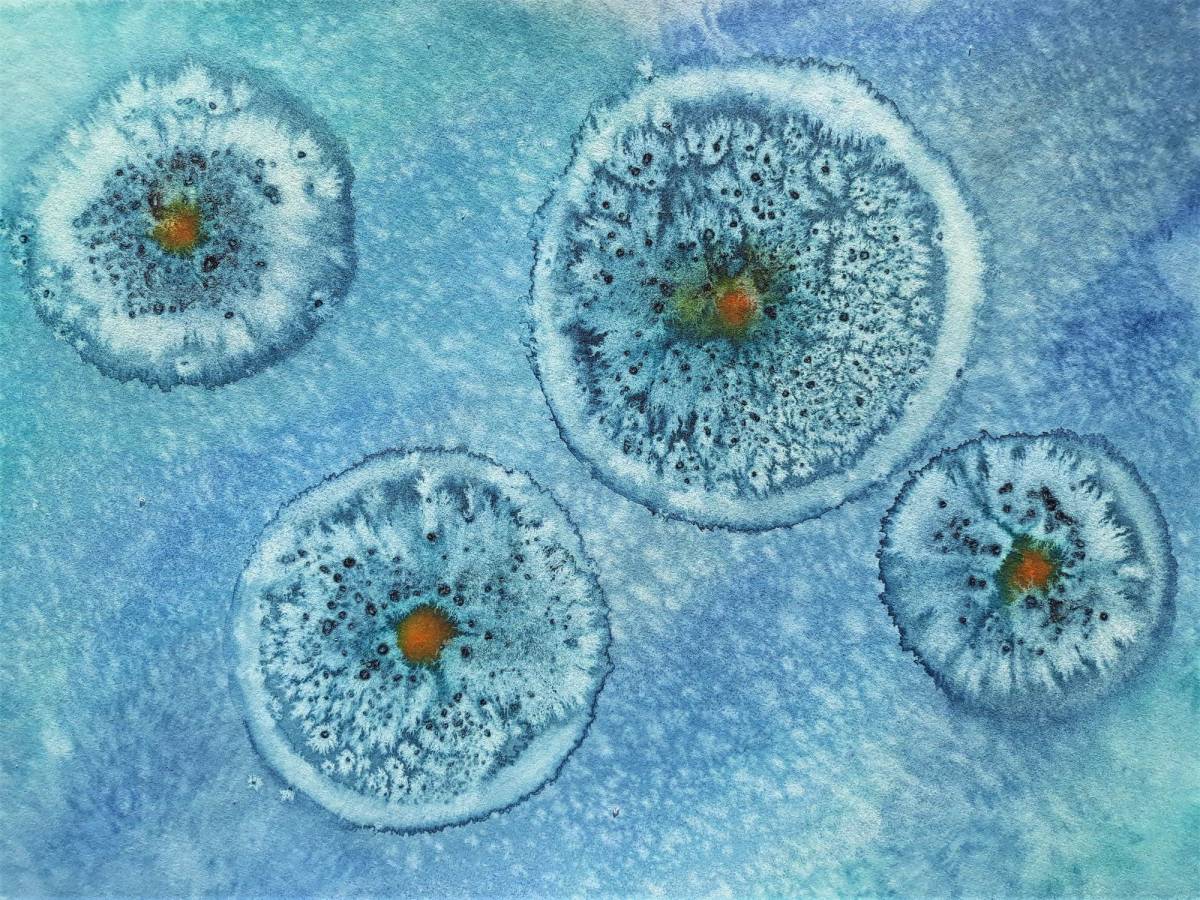This topic was presented on November 27, 2020 during the Night of Researchers 2020 event, at the invitation of the Institute of Space Sciences.
In July 2015 I participated in the fourth edition of the Visual Arts Symposium “Art in the Garden” from Jibou. The university formation as a geologist favored my inspiration towards an approach to the theme “Water” from a perspective that combines scientific research with artistic vocation. Thus, at the Botanical Garden “Vasile Fati” Biological Research Center in Jibou, we took water samples, which we then studied under a microscope, under the guidance of researchers coordinated by Oana Sicora and Lia Mladin. I photographed a fascinating world, with microorganisms gathered in water droplets. The images capture algae, cyanobacteria, invertebrate microorganisms. The obtained photographs, treated as aesthetic objects, were then transposed into the painting, resulting in the artistic transfiguration of the small universe into the large universe. A reverse approach, as a method, to the one previously promoted, within the “Imaginary Maps” project, exhibited at the ICR.
In 2018 I continued this theme with a large series of watercolors (around 70 works, dimensions 50×70 cm, 30×40 cm). These could be seen in the exhibition open from March 13-31, 2019 at the 2ART Gallery, the “Mihai Eminescu” Cultural Center, within the Sector 2 City Hall, Bucharest and at the Văcărești Natural Park, on the occasion of the World Water Day, where there was also a painting workshop on this theme.
Dimensiunea Științifică a Artei – Interview at Radio Romania Cultural https://www.radioromaniacultural.ro/sectiuni-articole/stiinta/dimensiunea-stiintifica-a-artei-lucian-muntean-harta-unei-picaturi-de-apa-id35802.html
Description and concept:
The “Vasile Fati” Botanical Garden Biological Research Center in Jibou has hosted the “Art in the Garden” Symposium for the last 8 years, coordinated by the artist Radu Șerban, a project organized by the Culture and Art Center of Sălaj County in partnership with the University of Art and Design from Cluj-Napoca. In July 2015 I participated in the fourth edition of the Visual Arts Symposium “Art in the Garden” from Jibou. The theme of that edition was “Water” from the garden. Practically every participating artist had the freedom to be inspired and create something related to the water from the lakes or fountains in the garden, the pools in the greenhouses, from the aquariums or even from the summer rains that fell in torrents.
I was fascinated from the beginning by the research laboratory there. It reminded me of my college days. I was curious to know what the water actually contains? We practically use it every day, in the shower, then in the glass from which we drink it at the table, we see it in lakes, in rivers, it’s everywhere. Fortunately, we are not short of water for now! But what does it look like, beyond the fact that it is transparent, colorless? I had the opportunity to find out and that was very exciting. For several days we took water samples from different sources of the botanical garden, which we then studied under the microscope, under the guidance of the researchers coordinated by Oana Sicora and Lia Mladin.
The banal drop of water, which we generally underestimate, saying something like: “…what a big deal, it’s just a drop of water; there’s nothing more…”, the gateway to a fascinating microuniverse becomes paradoxical. Analyzing it under a microscope you have the chance to discover that life manifests itself in unsuspected forms. Through the binoculars of the microscope I watched with emotion how certain forms in that film of water move, move, live! Although I obviously knew there were microorganisms in water, I was fascinated to discover them. Transparent, with fragile forms, barely outlined, with shades of green, yellowish or brown, you could see how those creatures move, breathe or eat. After the amazement of the discovery, I also experienced a moment of shame for my ignorance and lack of awareness until then. How diverse and complex life is and how selfish we are when we always place ourselves in the center of attention… nothing begins and ends with us, let alone the Universe!
Within the Center for Biological Research in Jibou, studies are carried out in the field of plant and molecular biology.
Jibou researchers are currently working on an extensive program to study cyanobacteria (microscopic blue-green algae that are present in all aquatic environments) and species that have the ability to produce biohydrogen.
“We are studying these species with a view to using them as a renewable source of hydrogen production. In a short time, large quantities of cyanobacteria can be obtained in bioreactors. This innovative method can become an alternative to the fossil fuels from which energy is currently obtained, but which are in exhaustible resources”, said the scientific director of the Center, Lia Mladin.
Banal drop of water, which we generally underestimate, saying something like: “… what a big deal, it’s just a drop of water; there’s nothing more…”, the gateway to a fascinating microuniverse becomes paradoxical. Analyzing it under a microscope you have the chance to discover that life manifests itself in unsuspected forms. Through the binoculars of the microscope I watched with emotion how certain forms in that film of water move, move, live! Although I obviously knew there were microorganisms in water, I was fascinated to discover them. Transparent, with fragile forms, barely outlined, with shades of green, yellowish or brown, you could see how those creatures move, breathe or eat. After the amazement of the discovery, I also experienced a moment of shame for my ignorance and lack of awareness until then. How diverse and complex life is and how selfish we are when we always place ourselves in the center of attention… nothing begins and ends with us, let alone the Universe!
To highlight this diversity I later painted a large series of works, in acrylic and watercolor. With each new work, out of the more than 70 painted, I partially relived the joy of that discovery. Of course water was the primary element even in painting! On the surface of the paper, the color dispersed into the film of water, lines and colors blurred like images seen in the field of a microscope. What I was painting did not contain life, but it stimulated imagination, creativity and neurons in the brain, another miracle of Life!

